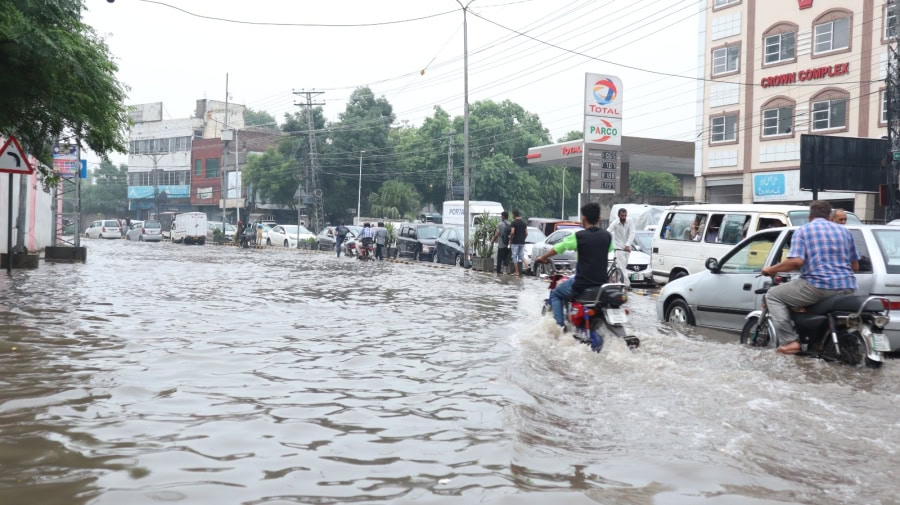ISLAMABAD – The monsoon rains that began on June 24 have brought about a number of weather-related incidents across Pakistan, resulting in the tragic loss of at least 150 lives so far.
The National Disaster Management Authority (NDMA) has reported that the province of Punjab has been hit the hardest, with 66 fatalities, followed by Khyber Pakhtunkhwa with 41 deaths, Sindh with 15, Balochistan with 6, and Islamabad with 11.
AJK and Gilgit-Baltistan have also reported 6 and 5 deaths, respectively. Additionally, over 233 individuals have been injured and 468 houses have been destroyed as a result of the heavy rains and flooding. The situation is dire and is being closely monitored by NDMA officials.
Starting today (Wednesday, a new westerly wave is predicted to move into the upper regions of Pakistan. The Pakistan Meteorological Department (PMD) forecasts that this monsoon will last until July 30th.
This weather system may cause thunderstorms and rainfall in Islamabad. Other areas, such as South Punjab, Kashmir, Gilgit Baltistan, Khyber Pakhtunkhwa, and Balochistan, are expected to receive thunderstorms and rain.
Further, southeast Balochistan and South Punjab may experience heavy rainfall, while sporadic downpours are forecast for Gilgit Baltistan and Kashmir.
Upper Sindh may also receive rainfall in certain areas. However, the Met Office warns of possible flooding in low-lying regions and landslides in hilly areas, as well as flash floods in hill torrents during heavy rains.in hilly regions and flash floods in hill torrents during heavy rains.










